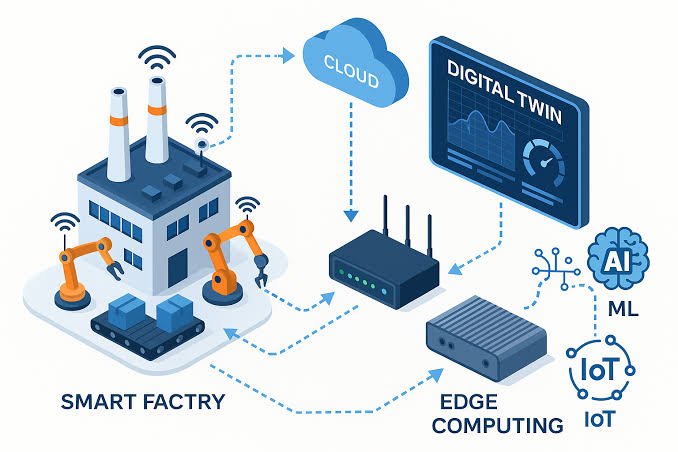Digital twins—real‑time virtual replicas of physical assets, processes, or systems—have emerged as a cornerstone of Industry 4.0. By fusing IoT sensor data, advanced analytics, and simulation, digital twins enable predictive maintenance, optimized operations, and accelerated innovation cycles.
1. The Anatomy of a Digital Twin
- Physical Asset: Machinery, building, or entire factory floor.
- Digital Model: Geometry, physics‑based behavior, and performance parameters.
- Data Integration Layer: Live feed from sensors (vibration, temperature, flow rates).
- Analytics & Simulation Engine: AI/ML models that forecast failures, test “what‑if” scenarios, and recommend optimizations.
2. Key Use Cases Across Industries
- Manufacturing
- Predictive Maintenance: Siemens’ gas turbines use digital twins to predict component wear—reducing unplanned downtime by 25%.
- Production Line Optimization: BMW employs twin‑driven simulations to balance throughput and minimize energy consumption.
- Smart Cities & Infrastructure
- Traffic Flow Modeling: Singapore’s Virtual Singapore project uses twin data to simulate congestion patterns and plan road improvements.
- Building Management: Digital twins of skyscrapers optimize HVAC settings based on occupancy forecasts, cutting energy use by 15%.
- Healthcare & Pharma
- Patient Avatars: Personalized digital twins simulate drug responses, helping physicians tailor treatments.
- Facility Operations: Hospital twins manage equipment utilization and infection‑control workflows.
3. Building Your First Digital Twin: A Phased Approach
- Pilot Small: Select a single critical machine or process with robust sensor coverage.
- Model Calibration: Use historical performance data to train initial simulation models and validate against live readings.
- Scale Platform: Integrate multiple twins into a unified dashboard—group assets by function or location.
- Embed AI: Layer anomaly detection and prescriptive‑analytics modules to move from reactive to proactive operations.
4. Technology Stack & Integration Tips
- IoT Connectivity: MQTT or OPC UA protocols for secure data transport.
- Cloud vs. Edge:
- Edge Twins: Core latency‑sensitive controls run locally.
- Cloud Twins: Large‑scale analytics and long‑term trend analysis.
- Visualization Tools: Unity 3D or Unreal Engine for immersive 3D dashboards; WebGL for browser‑based views.
5. ROI & Business Impact
- Efficiency Gains: Early adopters report 10–20% improvements in OEE (Overall Equipment Effectiveness).
- Cost Savings: Predictive maintenance can slash annual upkeep costs by up to 30%.
- Innovation Speed: Virtual testing reduces physical prototyping cycles by 40%.
Conclusion
Digital twins transform static assets into living systems—bridging the physical and digital worlds. Organizations that strategically pilot, scale, and embed AI within their twins will unlock unprecedented levels of efficiency, sustainability, and competitive edge in the Industry 4.0 era.









